Nocturnal Convection
Thanks to my good friend Donna Maxie for the picture below from early Thursday morning as a line of strong to severe storms rolled across central and northern Minnesota. We've been in a pretty typical summer pattern as strong to severe storms develop late afternoon/evening and continue into the overnight/early morning ours the next day. These storms tend to feed off of the increased moisture in the atmosphere and can not only produce strong to severe storms, but can also produce heavy/flooding rains.
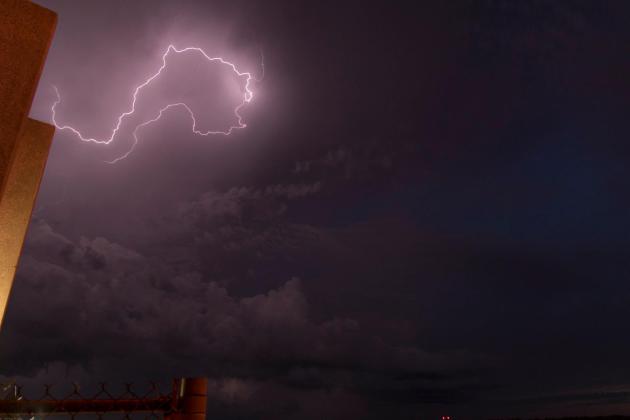
Tree Down in Duluth
Thanks to my good friend Sarah Frakes from Duluth for the picture below. A good old fashioned July storm unfortunately took her tree down early Thursday morning as severe storms rolled through.
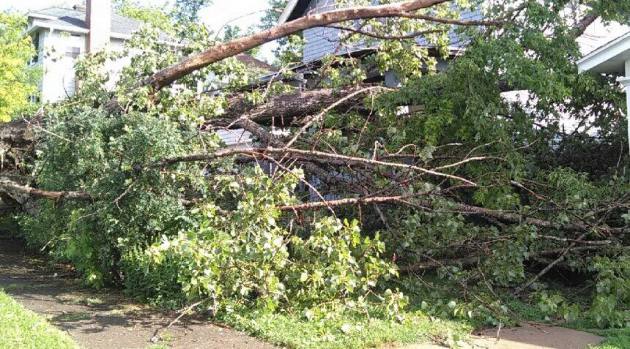
Pontoon Problem in Fergus Falls...
Thanks to my good friend Tom Dahl in Fergus Falls, MN for the picture below, where early morning thunderstorms created this problematic pontoon problem...
Severe Weather Reports Early Thursday Morning
Here are the severe storm reports from early Thursday morning, which shows a number of hail (blue dots) and wind (yellow dots) reports across parts of central/northern Minnesota and into northern Wisconsin. These thunderstorms were nocturnal and faded quickly as the sun came up on Thursday.
Rainfall Estimates Late Wednesday/Early Thursday
Here's the radar estimated rainfall from late Wednesday into early Thursday morning, which shows significant rainfall that fell near or just north of Mora early Thursday. Note that a number of flash flood warnings were issued for these areas as heavy rain continued in these areas.

Radar Early Thursday Morning
Here's the radar from early Thursday morning, which showed a line of strong to severe storms rolling across central/northern Minnesota into northwestern Wisconsin. This cluster of storms was responsible for a number of high wind and hail reports along with localized areas of flooding.
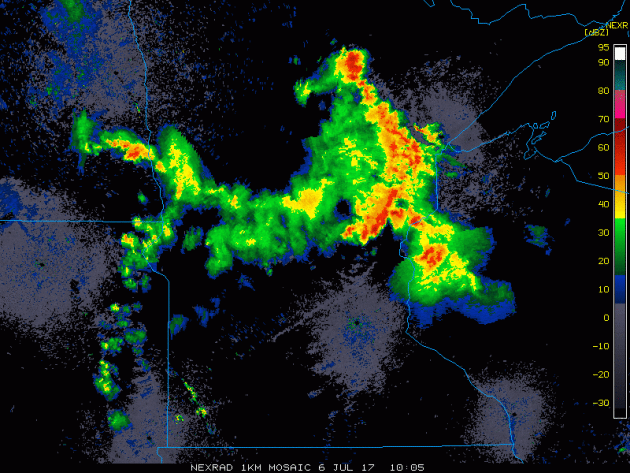
Visible Satellite From Thursday Morning
Here's the visible satellite loop from early Thursday morning, which shows the cluster of storm decaying across parts of Minnesota and Wisconsin. This line of storms was responsible for a number of hail and high wind reports across the central/northern part of Minnesota and into Wisconsin. Note how quickly we cleared out during the morning hours and the storms faded.

Severe Threat Friday
The good news is that after several days of unsettled weather across much of Minnesota, but will continue across parts of Wisconsin. The rain and thunder threat dwindles dramatically on Friday and Saturday as the front drops south. The image below shows the thunder threat for Friday and note that there is still a Marginal threat over Wisconsin, while none of Minnesota is under any rain or thunder threat.
.png)
Simulated Radar
Here's the simulated radar from midday Friday to Sunday, which suggests much quieter conditions across the region on Friday and Saturday as a bubble of high pressure slides in. A weak impulse of energy will bring a chance of spotty showers and storms into the region once again on Sunday. Stay tuned..
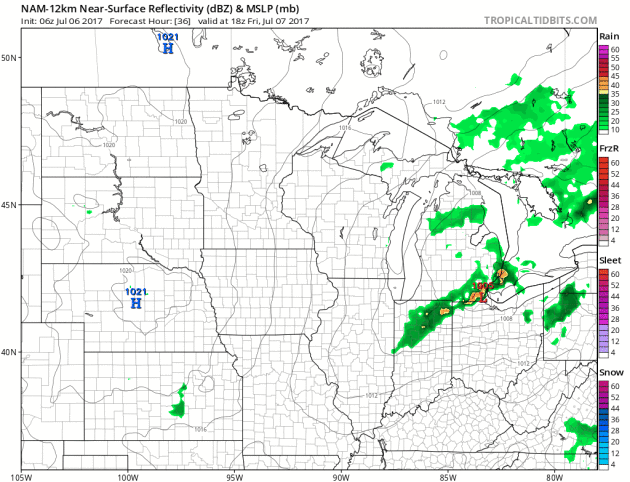
Rainfall Potential Through Sunday
Dry conditions will be with us on Friday and Saturday, but another batch of showers and storms could bring isolated areas of heavy rainfall to the area on Sunday. Here's the rainfall potential through 7pm Sunday.
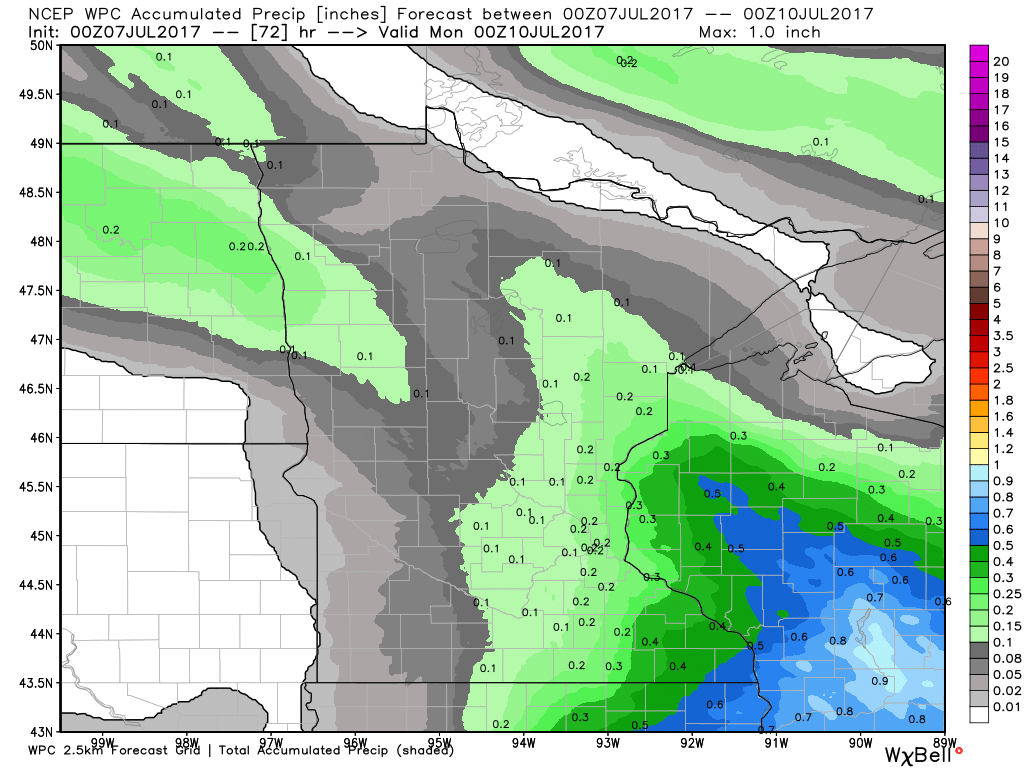
Lower Humidity Friday and Saturday!
It was a steamy week with dewpoints well into the 60s across much of the state on Wednesday and Thursday. The good news is that post-front Friday & Saturday, dewpoints will be in the 50s! This will feel much more refreshing than it did early this week.
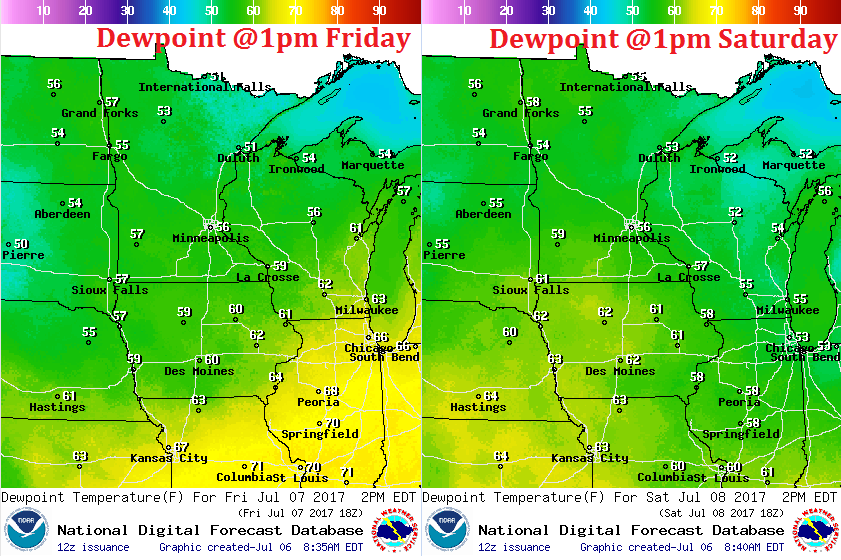
Slightly More Humid Sunday
Here's a look at dewpoints on Sunday, which will be a little higher than what they'll be on Friday and Saturday. It won't be oppressive, but it sure will feel a little more sticky on Sunday. We could even have a few spotty PM showers and storms on Sunday as well. Stay tuned...
___________________________________________________________________________
"Get Ready for Major Traffic Jams During the 2017 Solar Eclipse"
"With just about two months to go before the Aug. 21 total solar eclipse, one big question is: Just how many people intend to travel into the path of totality, which stretches from Oregon to South Carolina? "Imagine 20 Woodstock festivals occurring simultaneously across the nation," said Michael Zeiler, an eclipse cartographer who estimates conservatively that between 1.85 million and 7.4 million people may commute into the path. But unlike a concert, there are no ticket sales for the eclipse, so no one has a definitive count of how many people will attend. The only thing experts can do is speculate. Unfortunately, there is no recent precedent on which to base that speculation. It has been nearly 40 years since the last total solar eclipse passed over any part of the contiguous United States. On that occasion — Feb. 26, 1979 — the moon's umbral shadow passed over just five states in the Pacific Northwest and Northern Plains."
(The total solar eclipse of Aug. 21, 2017, will be an incredible celestial sight, and a traffic nightmare. Anyone planning to commute into the path should plan extra time. This map, created by eclipse cartographer Michael Zeiler, shows the progress of the moon's shadow.
Credit: Michael Zeiler/GreatAmericanEclipse.com, used with permissionThe total solar eclipse of Aug. 21, 2017, will be an incredible celestial sight, and a traffic nightmare. Anyone planning to commute into the path should plan extra time. This map, created by eclipse cartographer Michael Zeiler, shows the progress of the moon's shadow. Credit: Michael Zeiler/GreatAmericanEclipse.com, used with permission via Space.com)
Credit: Michael Zeiler/GreatAmericanEclipse.com, used with permissionThe total solar eclipse of Aug. 21, 2017, will be an incredible celestial sight, and a traffic nightmare. Anyone planning to commute into the path should plan extra time. This map, created by eclipse cartographer Michael Zeiler, shows the progress of the moon's shadow. Credit: Michael Zeiler/GreatAmericanEclipse.com, used with permission via Space.com)
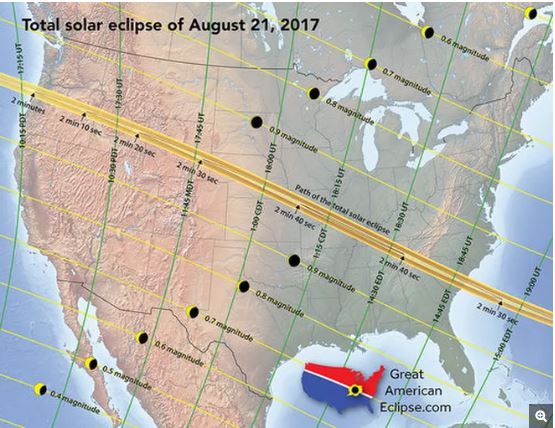
________________________________________________________________________
5.8 Magnitude Earthquake: Lincoln, Montana
According to the USGS, there was a 5.8 magnitude earthquake near Lincoln, Montana on Wednesday night. Here's more from the USGS: The July 6, 2017 M 5.8 earthquake southeast of Lincoln in western Montana occurred as the result of shallow strike slip faulting along either a right-lateral, near vertical fault trending east-southeast, or on a left-lateral vertical fault striking north-northeast. The location and focal mechanism solution of this earthquake are consistent with right-lateral faulting in association with faults of the Lewis and Clark line, a prominent zone of strike-slip, dip slip and oblique slip faulting trending east-southeast from northern Idaho to east of Helena, Montana, southeast of this earthquake. The Lewis and Clark line is a broad zone of faulting about 400 km in length, and up to 80 km wide (wider to the east). Faults within this zone, primarily of Middle Proterozoic to Holocene in age, can be traced as much as 250 km along strike, and typically change in strike from east (near Idaho) to southeast (near Helena). In the region of the July 6th earthquake, prominent faults include the St Mary’s-Helena Valley fault, and the Bald Butte fault, both right-lateral structures. More detailed field studies will be required to identify the causative fault responsible for this earthquake. Western Montana and northwestern Wyoming have experienced at least 16 other M 5+ earthquakes within 300 km of the July 6, 2017 event over the preceding century. The largest was the August 1959 M 7.2 Hebgen Lake earthquake – the largest historic event in the intermountain region – which occurred about 280 km to the south-southeast of the July 6th event. The Hebgen Lake earthquake triggered a large landslide that resulted in significant damage and more than 28 fatalities. A M 6.9 earthquake just over 100 km to the southeast of the July 6th earthquake in June, 1925, caused significant damage, but no fatalities. A M 5.6 earthquake occurred 170 km to the south of the July 6th event in July 2005, and caused minor damage in the surrounding region.
See more from the USGS HERE:

_____________________________________________________________________________
See more from the USGS HERE:
_____________________________________________________________________________
Atlantic Outlook: Tropical Depression #4
The National Hurricane Center is keeping an eye on a wave of energy in the Atlantic basin, which has intensified into Tropical Depression #4. Unfortunately for this system it will be running into some dry air over the Central Atlantic, which should help to keep this system at minimal strength.
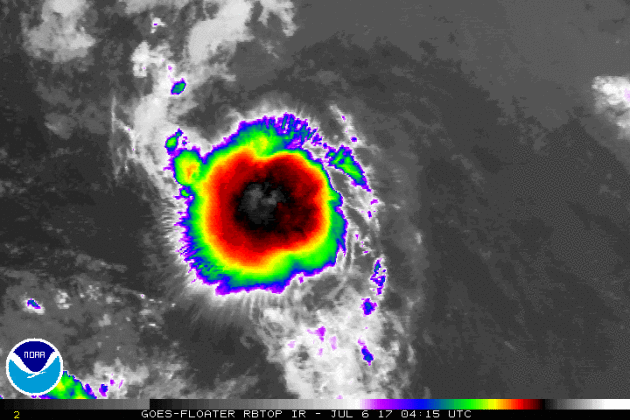
According to NOAA's NHC, Tropical Depression #4 will likely stay a depression over the next several days. It also appears that the storm will stay away from any major landmasses. Stay tuned...

Here's a look at another wave of energy in the Eastern Pacific that the National Hurricane Center is keeping their eye on. This particular wave also has a high probability of tropical formation within the next 5 days.
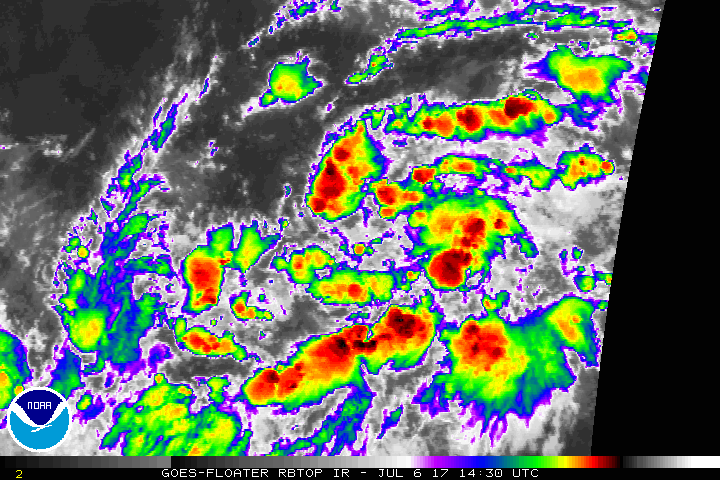
Eastern Pacific Outlook
According to NOAA's NHC, there is one wave of energy that has a high probability of tropical formation within the next 5 days. The good news is that if these storms develop any further, they look to drift west, away from any major landmass. Note that we've already had four named storms in the Eastern Pacific this season: ADRIAN, BEATRIZ, CALVIN and DORA. DORA was the only storm to reach hurricane status. EUGENE is the next name on the list.
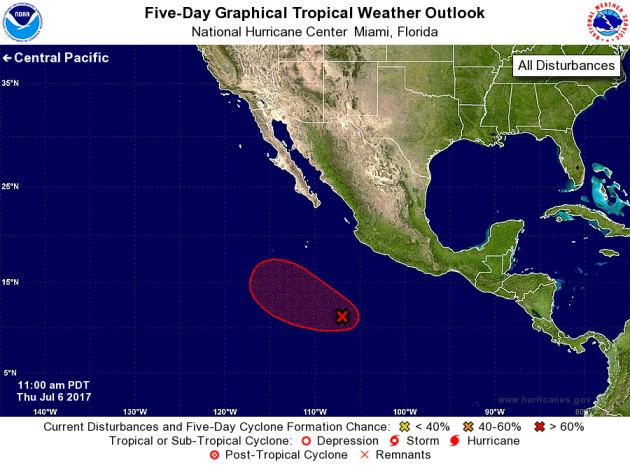
According to NOAA, here are the potential weather hazards as we head into the weekend and early next week:
1.) Much above-normal temperatures for parts of the western U.S. and northern high Plains, Sun, Jul 9.
2.) Much above-normal temperatures for much of the northern and central Rockies and northern and central Great Plains, Mon-Thu, Jul 10-13.
3.) Much above-normal temperatures for parts of the interior of Alaska, Sun-Thu, Jul 9-13.
4.) Flooding possible across parts of Oklahoma.
5.) High risk of much above-normal temperatures for the northern Great Plains, Fri-Sun, Jul 14-16.
6.) Moderate risk of much above-normal temperatures for portions of the northern Rockies and northern to central Great Plains, Fri-Mon, Jul 14-17.
7.) Slight risk of much above-normal temperatures for much of the western U.S., Great Plains, and upper Mississippi Valley, Fri-Thu, Jul 14-20.
8.) Slight risk of much above-normal temperatures for parts of interior Alaska, Fri-Sat, Jul 14-15.
9.) Severe Drought across parts of the Great Plains, Arizona, California, and Hawaii.
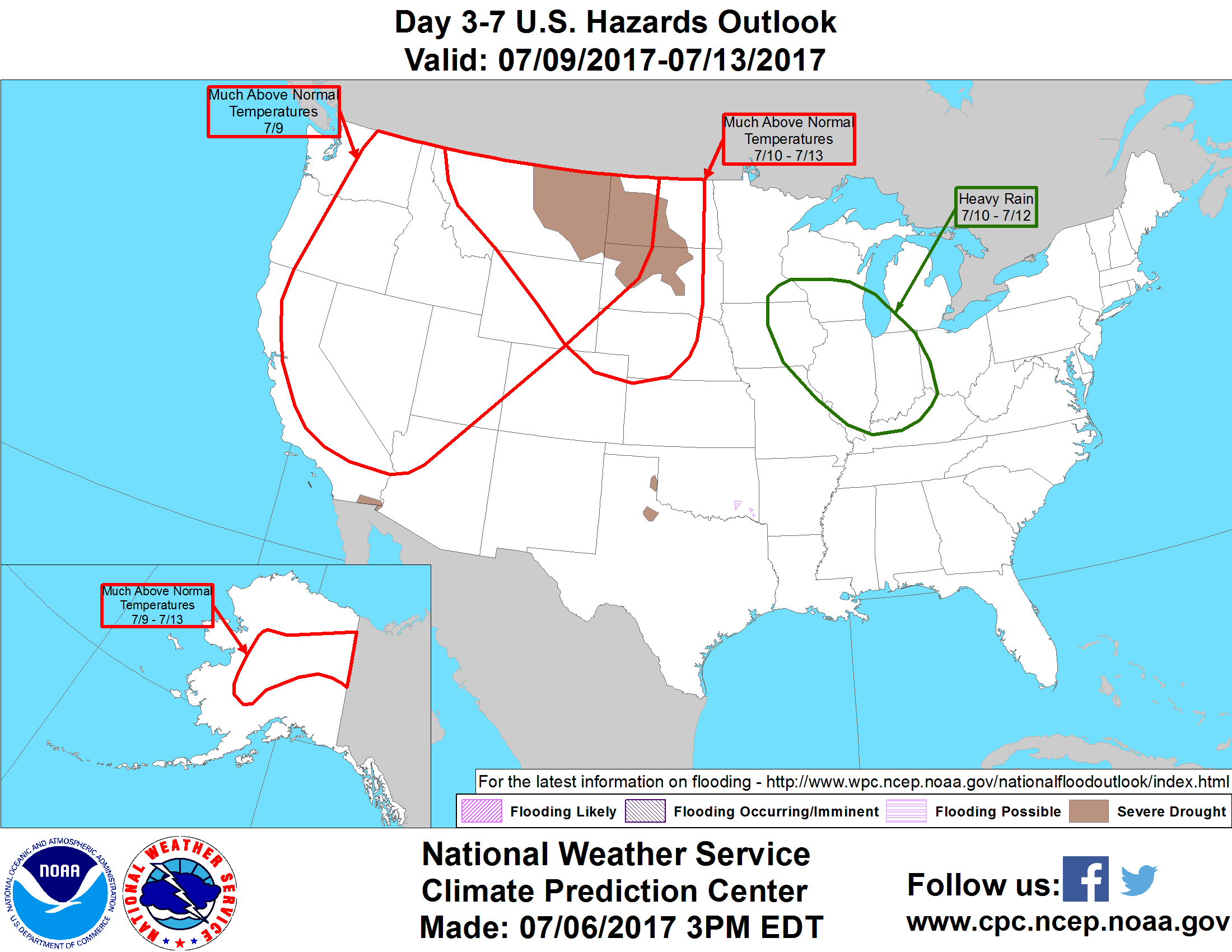
Flood Concerns Friday
According to NOAA, excessive rainfall on Friday will be possible in a few spots from the Central Plains over Kansas as well as parts of Ohio, West Virginia and Pennsylvania and also from Long Island to near Cape Cod. Note that there is a slight risk of excessive rainfall from near Long Island to Cape Cod.
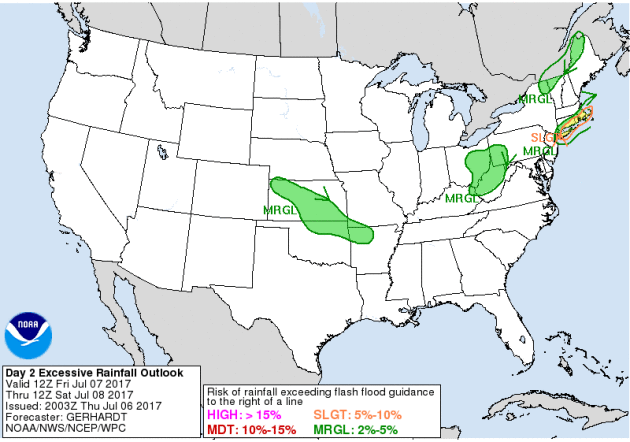
Take a look at the heavy rain potential across the Northeast through Sunday morning. Note that some locations could see 1" or more, which could lead to some isolated flood concerns across the region.
________________________________________________________
Weather Outlook
Here's the weather outlook through early next week, which suggests unsettled weather continuing across parts of the eastern half of the country. Note that a few storms could be strong to severe along with locally heavy rainfall. Meanwhile, spotty storms will be possible in the western US, but it won't be as widely scattered. There may also be some monsoon thunderstorms in the Southwestern US over the next few days.
.gif) _________________________________________________________________
_________________________________________________________________
PRELIMINARY 2017 Tornado Count
According to NOAA's SPC, the PRELIMINARY 2017 tornado count is 1126 (through July 5). Note that is the most active year for tornadoes since 2011, when there were nearly 1,600 tornadoes. Keep in mind there was a major tornado outbreak in the Gulf Coast region from April 25-28, 2011 that spawned nearly 500 tornadoes, some of which were deadly. That outbreak is known as the Super Outbreak of 2011 and has gone down in history as one of the biggest, costliest and one of the deadliest tornado outbreaks in history.

_________________________________________________________________
Extended Forecast for Phoenix, AZ
It's heating up again in the Southwest. Here's the extended forecast for Phoenix, AZ, which calls for high temperatures up to near 120F again by the end of the week! Also note the increase in thunderstorm potential! Monsoon season is officially underway in the Southwest and could bring storms into the Phoenix area by the end of the week as well.
Death Valley, CA
With temperatures heating up in the Southwest, readings in Death Valley could approach 120F to 125F over the next several days. Also note that there could even be a chance of thunder by the end of the weekend!
Heat is the #1 Weather Related Killer in the U.S.
"Nationwide, heat is the #1 weather-related killer. Stay inside in a cool ventilated place whenever possible. Restrict outdoor work or exercise to early morning or nighttime. If outside, drink plenty of water and take frequent breaks. Frequently check on the young, elderly, and those with health conditions. Never leave children or pets in a car unattended."
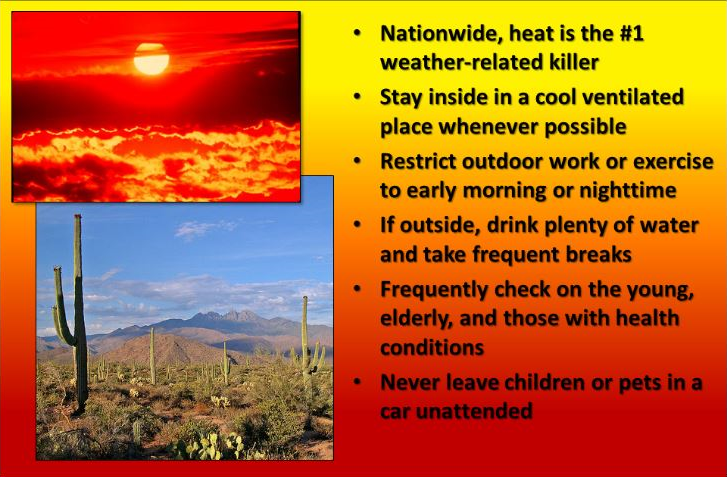
Excessive Heat Builds Again
The National Weather Service has issued a number of excessive heat advisories across the Southwest, including the Excessive Heat Warnings for the Phoenix on Friday, where temperatures could near 120F!
LAX Airport vs. Downtown Los Angeles
XXX
Friday: High Temperatures, Highs Above Average & Records
High temperatures on Thursday across the Southwest will still be very warm with desert locales in the triple digits. Some spots could be as warm as 5F to 15F above average with a few records possible in Arizona.

Saturday: High Temperatures, Highs Above Average & Records
High temperatures on Friday will be even hotter with temperatures nearly 10F to 15F above average in many spots. Note how many record highs there could be across the region as well.
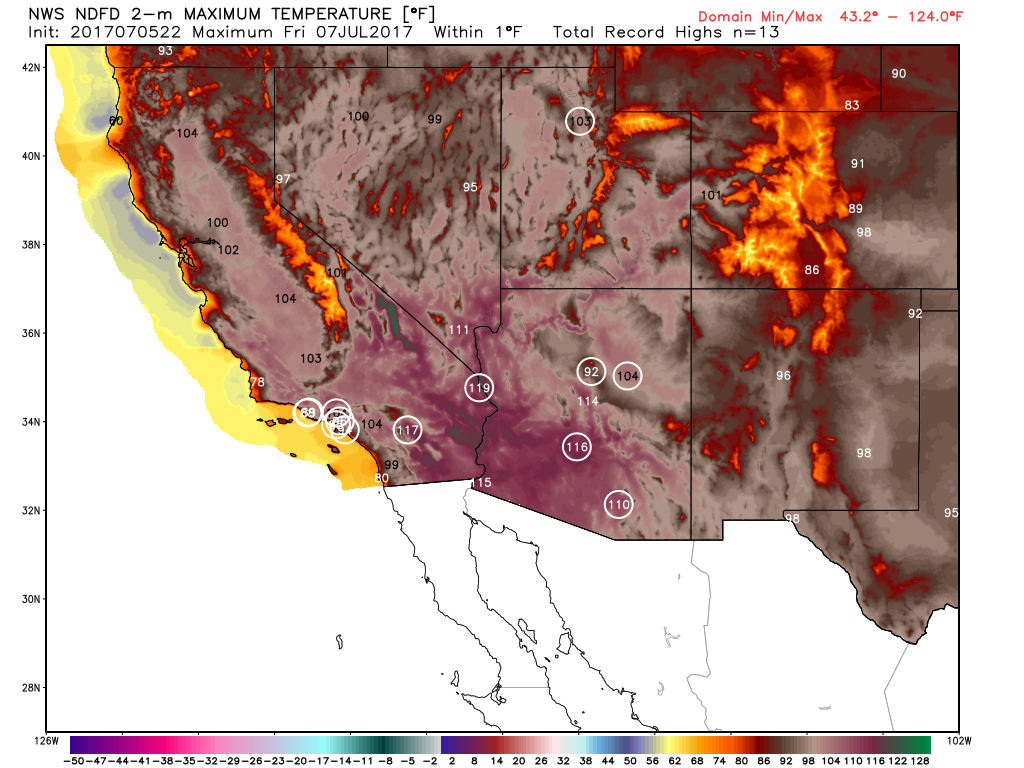
_______________________________________________________________________
Fire in Breckenridge, CO
WOW! Take a look at this photo from 9NEWS (KUSA) Facebook page showing the fire that broke out in Breckenridge, CO on Wednesday... Here's a snippet from their website with updates on the fire:
Officials in Summit County said the Peak 2 Fire is expected to flare up again Thursday afternoon. The 84-acre fire started burning Wednesday morning near Breckenridge. So far, 463 homes have been evacuated from the Peak 7 subdivision and the entire town of Breckenridge is on alert for a potential evacuation order - especially if the fire spreads. Thankfully, a wind shift changed the direction of the fire from Breckenridge. The wildfire sent a large plume of smoke into the air between Breckenridge and Frisco, with visible flames. As of 9:15 p.m. Wednesday, no structures have been damaged.
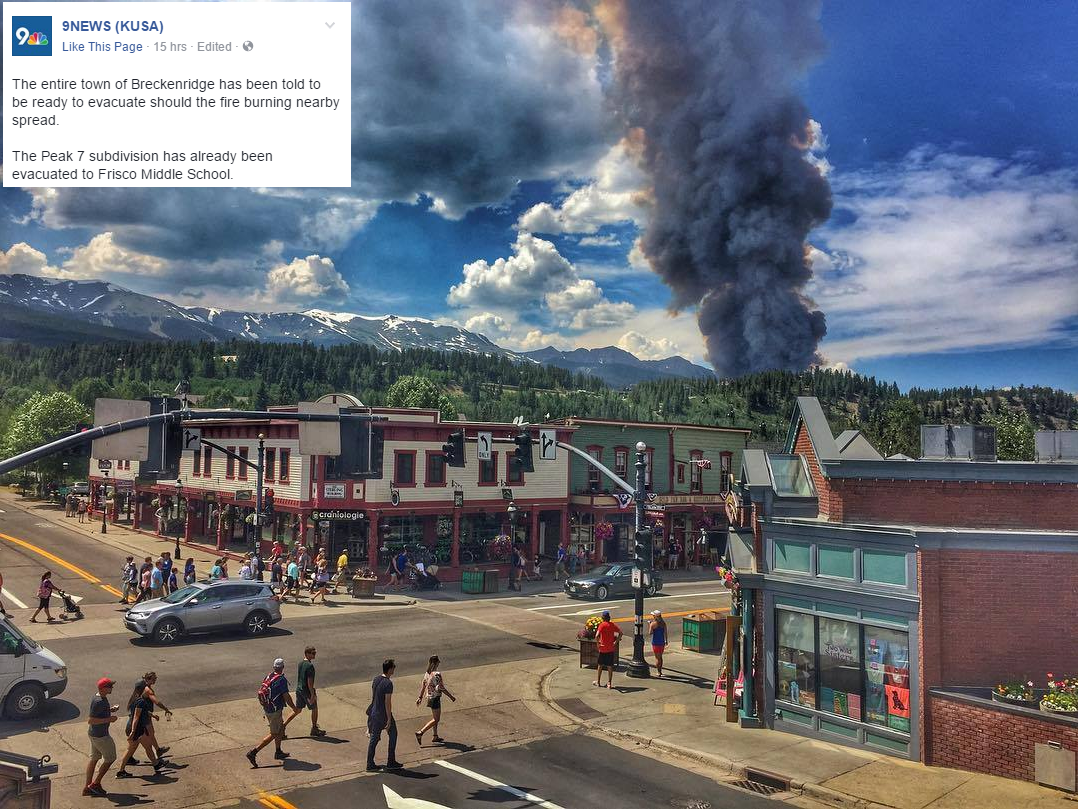
The Peak 2 Fire
According to Inciweb, this has been dubbed the Peak 2 Fire, which is located 2 miles north of the Breckenridge Ski Resort. Here's more from Inciweb: "The Peak 2 fire is burning in the Miner's Creek drainage between Frisco and Breckenridge, two miles north of the Breckenridge ski area, in dense lodgepole and dead/down beetle killed pine. The Multi Mission Aircraft (MMA) flight mapped the fire at 84 acres as of 7 p.m. Wednesday, July 5."

Ongoing Large Wildfires
Here's a look at the current wildfires across the Western US. The recent hot weather has allowed tinder dry conditions to develop, which has led to several wildfires popping up.
No Drone Zone: "Drones causing air support to be grounded during wildfires"
Here's an interesting story regarding drones causing air support to be grounded during wildfires! Here's the latest from Fox 31 in Denver (KDVR): "Fire departments statewide are pleading with the public to follow the rules when it comes to drones around active wildfires. Flying high above the ground, drones give a bird’s-eye view of the world. From cityscapes to places off-limits to the public, they can soar into fires like never before. “We certainly see the benefit in fact South Metro is seeing a few people to get properly trained,” South Metro Fire Rescue spokesman Eric Hurst said. However, sometimes drones can also be a hazard for fire crews. On Saturday, South Metro was one of four agencies responding to a grass fire in Sedalia. The 18-acre fire required air support but couldn’t utilize it as planned. “During [Saturday’s] incident, one of our fire crews observed a drone flying around the scene, so that triggers a lot of concerns for us,” Hurst said. A drone in the immediate area of a wildfire makes conditions too unsafe for airplanes. If the two collide, it could cause the plane to crash. “The pilots don’t want to be up in the air when they can’t communicate with another aircraft that’s flying next to them,” Hurst said. A similar situation happened at the Lightner Creek Fire in Durango last week. Planes carrying fire retardant were forced to drop their loads early and leave the area because of an unauthorized drone in the flight path. “We don’t want any kind of an accident to happen so at that point, aircraft is going to have to be grounded until we can find out who’s operating the drone and we can get them to stop,” Hurst said."
Brian Head Fire
According to Inciweb, one of the largest fires currently burning is located near Brian Head, Utah. There are nearly 1,400 people working on a fire that has consumed 68,407 acres since Saturday, June 17th. This was a human caused fire, which is still under investigation. Here was the latest weather report: "High pressure over the desert southwest has allowed strong warming, with temperatures even at 8500 feet reaching the lower 80s, with lower elevations reaching into the low 90s. Afternoon relative humidity continues below 15%, with some places still drying to below 10% relative humidity. By the end of the week, on Friday the 7th, moist and unstable air is expected to have entered the region and reached southern Utah. This will increase the relative humidity above the critical threshold, but will also dry thunderstorms with lightning. Outside of thunderstorms, winds will remain light through Saturday morning. Suppression repair continues in Branch I and III."
Humidity Breaks. Nice Through Saturday
By Todd Nelson, filling in for Douglas
By Todd Nelson, filling in for Douglas
I like July! Corn on the cob, fresh BLT's from the garden and nocturnal thunderstorms.
Vivid nighttime lightning displays across parts of the state developed on the outer periphery of a big dome of hot and sweaty weather that bubbled into the region earlier this week. A summertime cold front pushed through the region on Thursday, which will allow the heat and humidity to break a bit Friday and Saturday. Other than a few pop-up spotty showers PM Friday, most of us will stay dry and sunny through the early weekend. Our next best chance of rain doesn't arrive until Sunday afternoon.
Enjoy the more comfortable weather for now. Extended models are suggesting a pretty steamy mid month, which will coincide with our typical hottest time part of the year. From July 14th to 16th, the average high and low peak at 84 degrees and 65 degrees respectively.
Yes, the Dog Days of Summer are here. Not sure about you, but I think a boiling pot of corn tastes much better on these lazy hazy days of summer.
Now, please pass the salt and butter.
______________________________________________________
______________________________________________________
Extended Forecast
FRIDAY: Not as sticky. Mostly sunny. Brief PM shower? Winds: NNW 7-12. High: 80
FRIDAY NIGHT: Mostly clear and quiet. Winds: NNW 5-10. Low: 62.
SATURDAY: Mostly sunny. Go jump in a lake! Winds: W 5-10. High: 83
SUNDAY: A bit muggy. Spotty late day rumbles. Winds: SSW 5-10. Wake-up: 65. High: 82
MONDAY: Lingering storms early. More PM sun. Winds: E 5-10. Wake-up: 64. High: 81
TUESDAY: Warmer & stickier. Storms overnight. Winds: SE 5-10. Wake-up: 63. High: 85.
WEDNESDAY: Unsettled. A few afternoon storms. Winds: SSE 5. Wake-up: 65. High: 82.
THURSDAY: Steamy sunshine develops. Winds: NE 5. Wake-up: 66. High: 88.
_______________________________________________________
_______________________________________________________
This Day in Weather History
July 7th
July 7th
2000: Torrential rains douse the southern Twin Cities metro area with 8 inches in a three to five hour span in northern Dakota county. Eagan receives the most damage; many homes were flooded.
1955: A tornado hits Marshall, leaving one dead and 13 injured. Hail causes one million dollars in damage.
________________________________________________________
________________________________________________________
Average High/Low for Minneapolis
July 7th
July 7th
Average High: 84F (Record: 101F set in 1936)
Average Low: 64F (Record: 44F set in 1891)
Average Low: 64F (Record: 44F set in 1891)
Record Rainfall: 3.00" set in 1918
_________________________________________________________
_________________________________________________________
Sunrise/Sunset Times for Minneapolis
July 7th
July 7th
Sunrise: 5:35am
Sunset: 9:01pm
Sunset: 9:01pm
Hours of Daylight: 15hours & 27mins
Daylight LOST since yesterday: ~1 minute and 8 seconds
Daylight LOST since summer solstice (June 20th): ~10 minutes
__________________________________________________________
Daylight LOST since summer solstice (June 20th): ~10 minutes
__________________________________________________________
Moon Phase for July 6th at Midnight
1.9 Days Until Full "Buck" Moon
1.9 Days Until Full "Buck" Moon
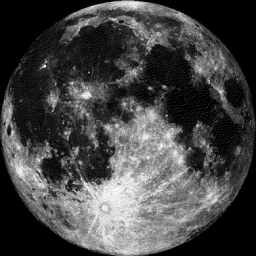
_________________________
Weather Outlook For Friday
Friday will be a fantastic day with temperatures and humidity values much lower than they were on Wednesday and Thursday. In fact, temperatures will be a little cooler than average across much of the state! With dewpoints in the 50s and plentiful sunshine, Friday is going to feel great!
UV Index for Friday - VERY HIGH
The UV Index will be considered VERY HIGH across much of the state of Minnesota on Friday, which means that it will only 15 to 20 minutes or less to burn unprotected skin. With that said, if you are planning on spending any extended length of time outside, make sure you wear appropriate attire and lather on the sun block!
Weather Outlook for Friday
Here's a look at winds on Friday, which will be out of the northwest post-front. This northwesterly wind will help to draw in cooler and more refreshing air. Winds at times during the afternoon could gust up close to 15-20mph across parts of western and southern Minnesota, but overall, it will be a pleasant day!

Weather Outlook for Friday
Other than a few spotty PM showers across Wisconsin, Friday will be a mostly sunny day with just a few fair weather cumulus clouds. Enjoy!
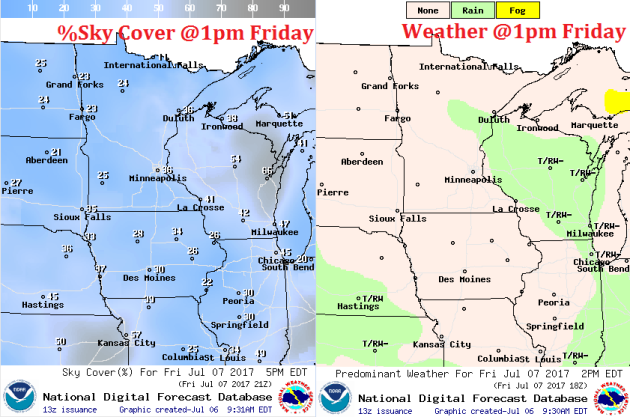
__________________________________________________________________________
Weather Outlook For Saturday
XXX
UV Index for Saturday - VERY HIGH
The UV Index will be considered VERY HIGH across much of the state of Minnesota on Saturday, which means that it will only 15 to 20 minutes or less to burn unprotected skin. With that said, if you are planning on spending any extended length of time outside, make sure you wear appropriate attire and lather on the sun block!
_____________________________________________________________
Temperature Outlook
Here's the temperature outlook through July 21st, which suggests flashes of heat taking us through the middle part of the month. After another hot day Thursday, readings will take a dip briefly into early next week before heating up again! It appears that several 90s could be in our future by mid month.
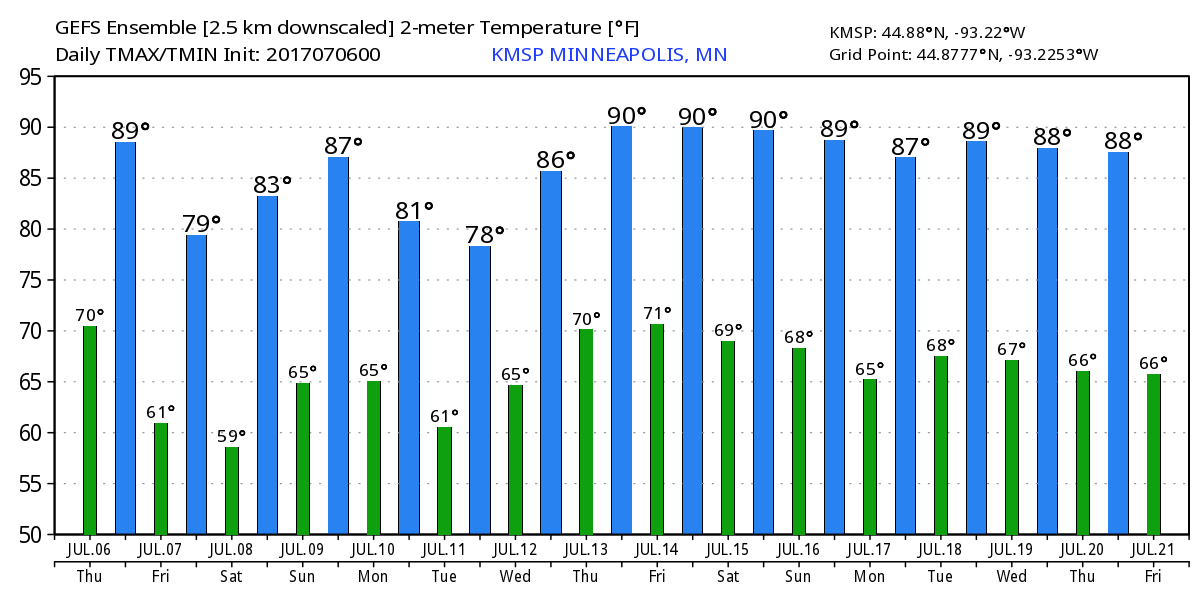
8 to 14 Day Temperature Outlook
According to NOAA's CPC, the extended temperature outlook from July 15th to July 19th suggests warmer than average temperatures moving back into the Upper Midwest. The middle part of the month could be quite steamy. Stay tuned...
___________________________________________________________
Extended Temperature Outlook
According to NOAA's CPC, the extended temperature outlook through July 19th shows much of the nation will be dealing with above normal temperatures around mid July. The only cool spot maybe located across the Lower Mississippi Valley and parts of the Gulf Coast States.
____________________________________________________________
Weather Outlook This Week
The weather outlook over the next couple of days shows stormy weather continuing across the eastern half of the country. Note that some of the storms could be strong to severe with locally heavy rainfall. There will also be spotty storms across the Intermountain West and even some monsoon storms in the Desert Southwest.
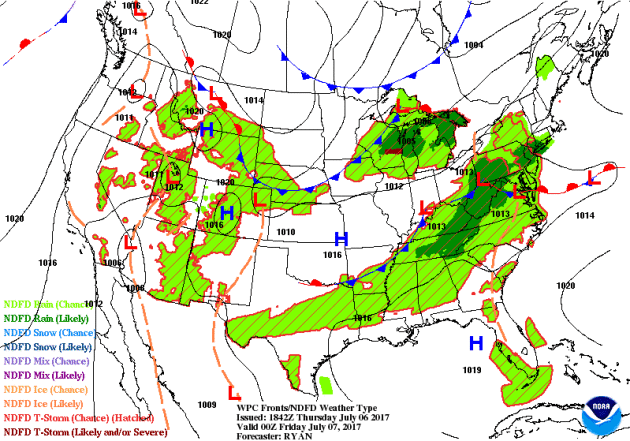
5 Day Precipitation Outlook
According to NOAA's WPC, the next several days could produce areas of locally heavy rainfall across parts of the Eastern US with some of the heaviest rain across parts of the Midwest and the Northeast. There is also a chance of heavy rainfall across parts of the Gulf Coast and the Coastal communities.
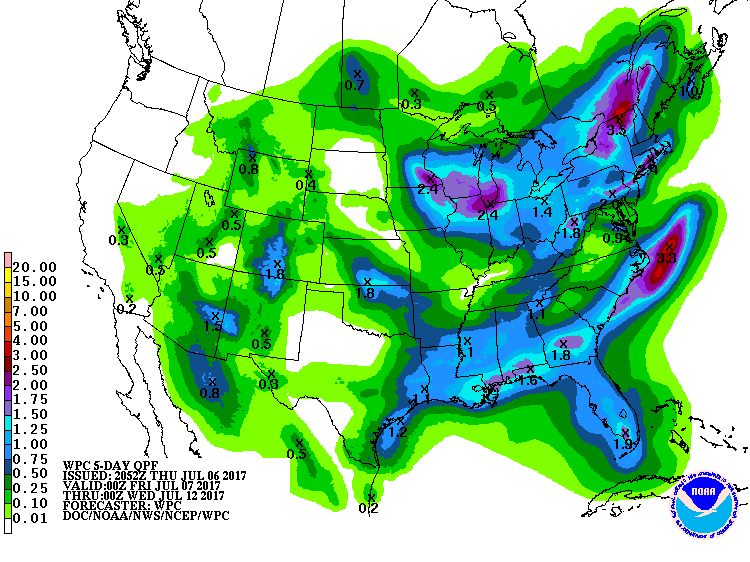
___________________________________________________________________
"Stephen Hawking: Earth Could Turn Into Hothouse Planet Like Venus"
"Earth could turn into a hothouse planet like Venus, with boiling oceans and acid rain, if humans don't curb irreversible climate change, physicist Stephen Hawking claimed in a recent interview. "We are close to the tipping point, where global warming becomes irreversible. Trump's action could push the Earth over the brink, to become like Venus, with a temperature of 250 degrees [Celsius], and raining sulfuric acid," he told BBC News, referring to the president's decision to pull the U.S. out of the Paris climate deal. But most climate experts say that scenario is a dramatic and implausible exaggeration: Relative to Venus, planet Earth is much farther from the sun and given its chemical makeup will never have such a thick carbon dioxide atmosphere, so it could not likely reach temperatures of 482 degrees Fahrenheit (250 degrees C) that Hawking described in the interview, they say."
(Image Credit: Aphelleon/Shutterstock via LiveScience)
__________________________________________________________________________________
"Impending Antarctic iceberg is the size of Delaware, and extends 700 feet below the surface"
"Any way you look at it, we're about to witness the birth of one massive iceberg. Researchers with the European Space Agency (ESA) have taken more detailed measurements of the massive iceberg set to cleave off the Larsen C Ice Shelf at any minute. According to data from instruments aboard the CryoSat and Sentinel-1 satellites, the iceberg will be one of the largest on record since at least the early 1990s, when satellite-based monitoring began in this region. The iceberg is expected to be about 6,600 square kilometers, or about 2,500 square miles, in area. Using a radar altimeter aboard the Cryosat satellite, scientists have measured the height of the ice surface, which they used to calculate the thickness of the ice and its volume. Noel Gourmelen from the University of Edinburgh said the iceberg is likely to be about 190 meters, or about 620 feet, thick, and contain about 1,155 cubic kilometers, or about 277 cubic miles, of ice."
(Image Credit: SHUTTERSTOCK / DURK TALSMA via Mashable)
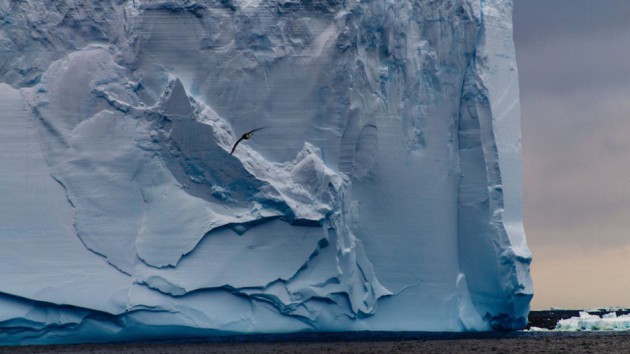
_________________________________________________________________
"Climate change expected to fuel larger forest fires — if it hasn't already"
"Global warming will likely heighten the risk of large, more difficult to control wildfires scorching the western United States. It’s the main conclusion of a body of science that, over the years, has increasingly drawn connections in the West between the prevalence of major blazes and the rising frequency of earlier springtime conditions followed by hotter and drier summers. “Climate absolutely affects fire because it affects how flammable the fuels are,” said LeRoy Westerling, a professor at UC Merced who has been studying climate and wildfires for the past 15 years. “Your drought years are going to be more extreme because it’s warmer during the drought years, so you have more evaporation, and those preceding years that were wetter are retaining less water,” added Westerling, who has worked on these issues with colleagues at places like UC San Diego’s Scripps Institution of Oceanography in La Jolla."
(Image Credit: NOAA)
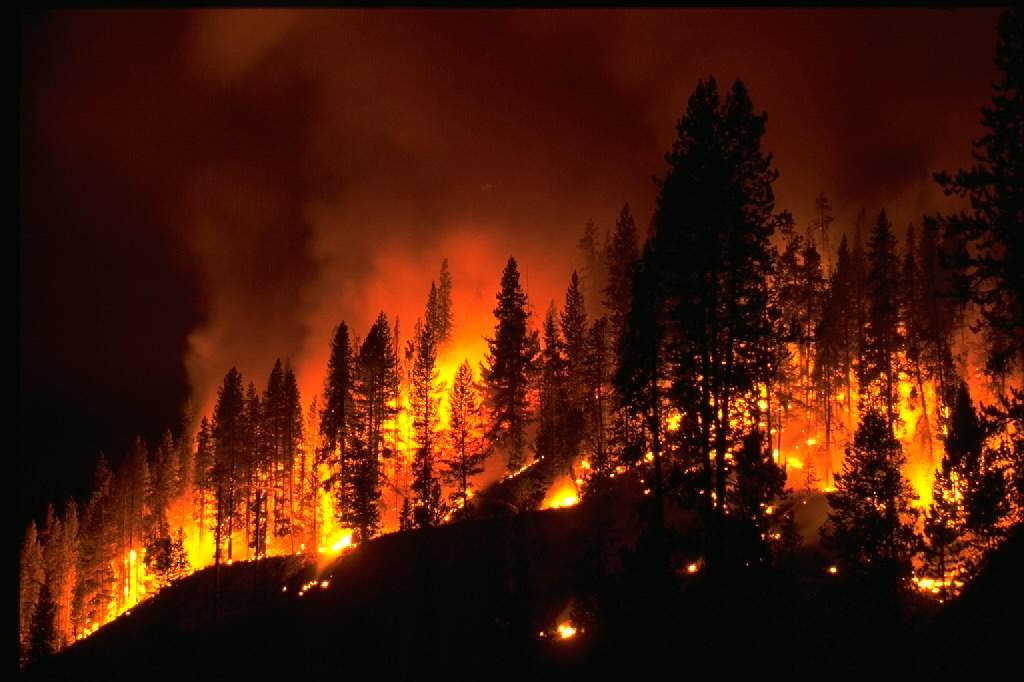
______________________________________________________________
"Air pollution exposure may hasten death, even at levels deemed 'safe,' study says"
"At a time when the Trump administration is moving to delay and dismantle air quality regulations, a new study suggests that air pollution continues to cut Americans’ lives short, even at levels well below the legal limits set by the U.S. Environmental Protection Agency. The nationwide study of more than 60 million senior citizens linked long-term exposure to two main smog pollutants — ozone and fine particulate matter — to an increased risk of premature death."
[Even at levels considered safe by the Environmental Protection Agency, the fine particulates and ozone in air pollution were associated with premature risk of death, according to a new Harvard study. (Allen J. Schaben / Los Angeles Times)]

_________________________________________________________________
"As space junk soars, science turns to nature for ideas"
"Even if we stop launching rockets today, cascading collisions between orbiting objects will continue to endanger satellites. But this sticky problem might have an even stickier solution: gecko-inspired trash grabbers. It was satellites that launched the space age, and it’s satellites that could bring it all crashing down. More than 1,300 circle above our heads, providing navigation signals, studying the planet, and beaming TV to millions. Few communications pass directly through space networks, but if not for the nearly three dozen atomic clocks providing reliably precise timestamps to anyone with an antenna, financial markets and cell service would quickly fall apart."
(Image courtesy: Orbital Debris Program Office/NASA)
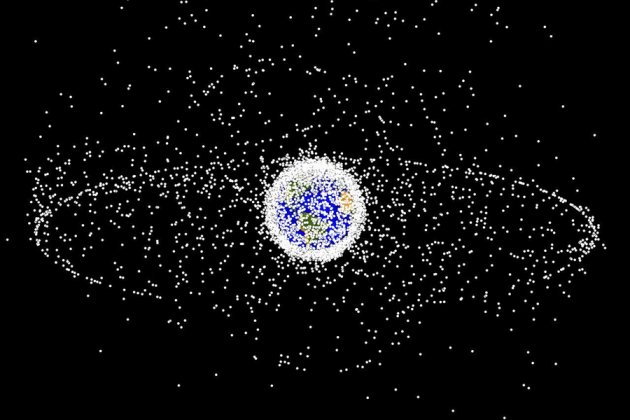
________________________________________________________________
"Harsh winter took heavy toll on wildlife across the western U.S."
Mule deer in several Rocky Mountain states and elk in eastern Washington were hit hard. Wildlife suffered higher than normal losses this winter in severe weather across the western United States, where the toll included the deaths of all known fawns in one Wyoming deer herd and dozens of endangered bighorn sheep in California. Wildlife managers in Colorado, Utah, Idaho, Oregon and Washington also reported higher losses of animals in the wake of one of the coldest and snowiest winters in decades. Parts of the Rockies saw snowfall as late as mid-June. “This year we kind of had all the factors that we don’t want — we had deep snow, we had periods of fairly cold weather, subzero, and then we also had some crusting on top of that snow,” said Roger Phillips, spokesman for the Idaho Fish and Game Department. Wildlife managers have been assessing the damage using radio collars and surveys of herds following a winter in which many parts of the West recorded record snowfall, including places where deer, pronghorn antelope and elk migrate each fall to escape the harsher mountain winters. Prolonged snow cover on winter grounds made it difficult for wildlife to find food, and spells of bitter cold made matters worse for the weakened animals by hardening the snow.
(In this Jan. 18, 2017, file photo provided by the Oregon Department of Fish and Wildlife, elk feed at the Wenaha Wildlife Area near Troy, Ore. Wildlife managers in seven states in the U.S. West, including Oregon, report severe weather this past winter was rough on wildlife.)

____________________________________________________________
"Surviving a lightning strike"
Sometimes they'll keep the clothing, the strips of shirt or trousers that weren't cut away and discarded by the doctors. They'll tell and retell their story at family gatherings and online, sharing pictures and news reports of survivals like their own or far bigger tragedies. The tourist hit on a Brazilian beach. The Texan struck dead while out running. The 65 people killed during four stormy days in Bangladesh. Only by piecing together the bystander reports, the singed clothing, and the burnt skin can survivors start to construct their own picture of the possible trajectory of the electrical current, one that can approach 200 million volts and travel at one-third the speed of light. In this way, Jaime Santana's family has stitched together some of what happened that Saturday afternoon in April 2016, through his injuries, burnt clothing, and, most of all, his shredded broad-brimmed straw hat. Jaime had been horse riding with his brother-in-law and two others in the mountains behind his brother-in-law's home outside Phoenix. Dark clouds had formed, heading in their direction, so the group had started back.
(Image courtesy The Week)
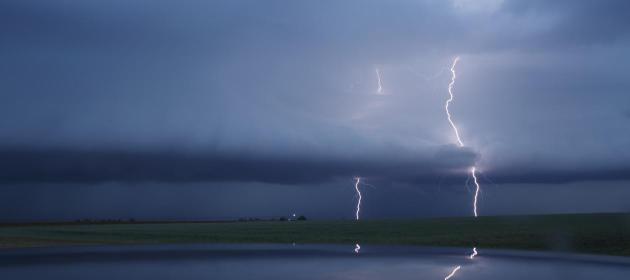
_____________________________________________________________________
"Global warming tipped scales in Europe’s heat wave"
Global warming gave a clear boost to the searing temperatures that blanketed Western Europe earlier this month — a heat wave that helped fuel deadly wildfires in Portugal. The greenhouse gas-driven warming of the atmosphere has made the intensity and frequency of such extreme heat up to 10 times as likely, according to a new analysis from researchers working with Climate Central’s World Weather Attribution program and several outside partners. It is the latest such attribution analysis to show that the warming that has occurred over the last century — nearly 2°F (1°C) — has already had a clear influence on such extreme heat events. “Global warming has already put a thumb on the scales; it’s already tipped the odds,” Noah Diffenbaugh, a Stanford University climate scientist who wasn’t involved with the work, said.
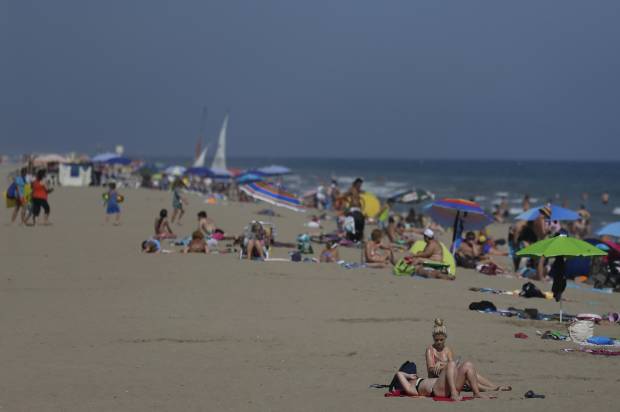
____________________________________________________________________
Thanks for checking in and don't forget to follow me on Twitter @TNelsonWX

No comments:
Post a Comment